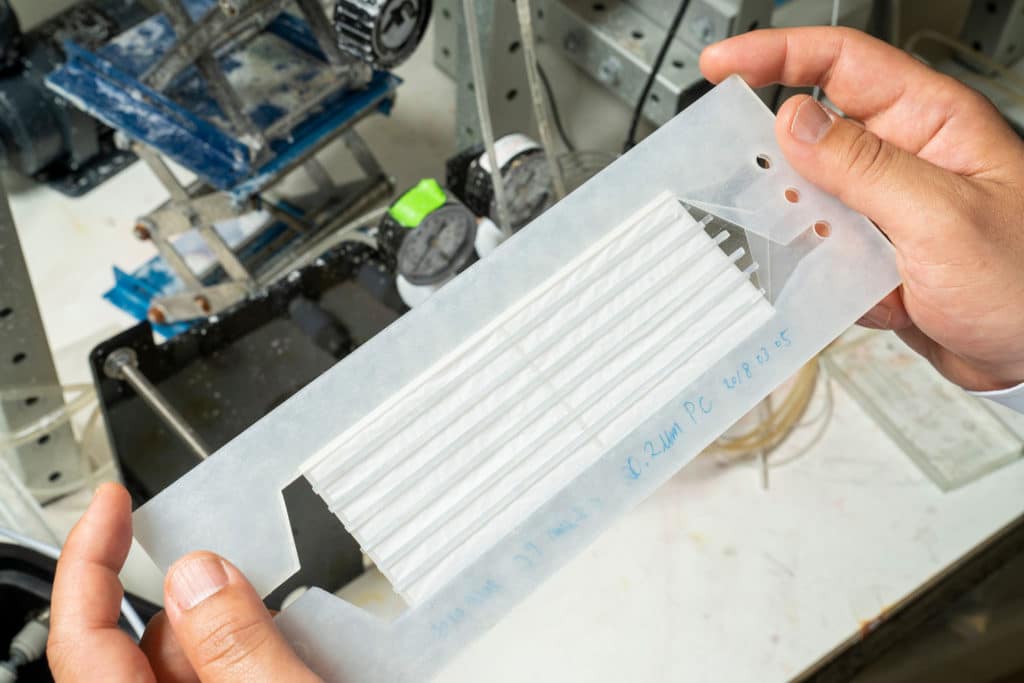A portable seawater desalination system would be highly desirable to solve water challenges in rural areas and disaster situations. While many portable desalination systems are already available commercially, they typically utilize filters that have to be replaced.
MIT researchers have developed a portable desalination unit weighing less than 10 kg that can remove particles and salts from seawater to make it drinkable. Unlike other portable desalination units that require filters, the MIT setup just requires a small amount of electricity to get the job done. This greatly reduces the long-term maintenance requirements.
The suitcase-sized and shaped device requires less power to operate than a cell phone charger, which means it can also be driven by a small, portable solar panel in scenarios where batteries aren’t an option. It automatically generates drinking water that exceeds World Health Organization quality standards.
Commercially available portable desalination units typically require high-pressure pumps to push water through filters; instead, the MIT unit relies on a technique called ion concentration polarization (ICP). The ICP process applies an electrical field to two membranes placed above and below a channel of water. As the water passes through the electrical field between the two membranes, the membranes repel positively or negatively charged particles, including salt molecules, bacteria, and viruses. The charged particles are funneled into the second stream of water that is eventually discharged.

The main channel of the water is now purified and relatively desalinated, but ICP does not always remove all the salts floating in the middle of the channel. So, the researchers incorporated the electrodialysis process to remove the remaining salt ions. They shrunk and stacked the ICP and electrodialysis modules to improve their energy efficiency and enable them to fit inside a portable device.
MIT’s desalination system incorporates a two-stage ICP process, with water flowing through six modules in the first stage and then through three in the second stage, followed by a single electrodialysis process. This minimized energy usage while ensuring the process remains self-cleaning.
The automatic desalination and purification process launches with just one button push. Once the salinity level and the number of particles decrease to specific thresholds, the device notifies the user that the water is drinkable. The MIT team also created a smartphone app that can control the unit wirelessly and report real-time data on power consumption and water salinity.
The current prototype generates drinking water at a rate of 0.3 liters per hour and requires only 20 watts of power per liter. The team is now working to make the device more user-friendly and improve its energy efficiency.
The team says its portable desalination device can be used in remote and severely resource-limited areas, such as communities on small islands or aboard seafaring cargo ships. It could also be used to help refugees fleeing natural disasters or soldiers on long-term military operations.
